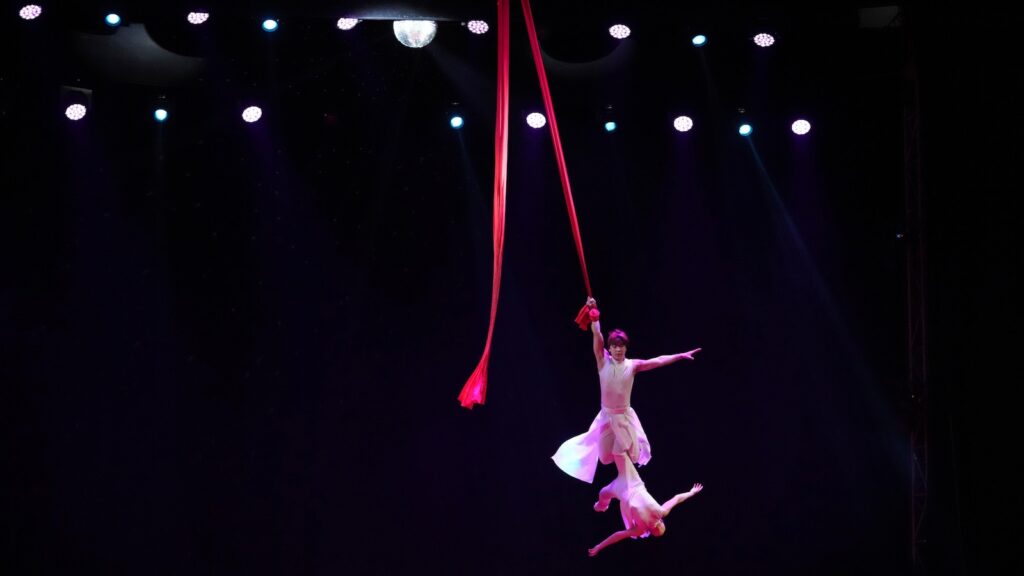ANSAN, South Korea — No extra elephant and monkey acts. No extra death-defying bike stunts. No extra singing or appearing on stage.
A number of hundred spectators nonetheless clapped always when acrobats with Dongchoon Circus Troupe, South Korea’s final and 100-year-old circus, twirled on an extended suspended cloth, juggled golf equipment on a big, rotating wheel and rode a unicycle on a tightrope underneath the massive prime.
“As I recall the hardship that I’ve gone via, I believe I’ve accomplished one thing vital,” Park Sae-hwan, the top of the circus, mentioned in a current Related Press interview. “However I additionally really feel heavy accountability as a result of if Dongchoon stops, our nation’s circus, one style in our performing arts, will disappear. That’s the issue.”
Based in 1925, Dongchoon is Korea’s oldest circus. Within the golden ages of South Korean circuses within the Sixties when most households nonetheless had no TVs, Dongchoon travelled throughout the nation, wowing audiences with then unique animals like an elephant and a giraffe and a wide range of reveals together with skits, comedian talks, singing, dancing and magic reveals. At its peak years, it had greater than 200 artists, acrobats and different workers, in response to Park.
Like in lots of different international locations, TVs and flicks later syphoned off the audiences of Dongchoon and different circuses in South Korea. Their actors, singers and comedians moved to TV stations, and a few turned greater stars. The appearance of the web, video video games {and professional} sports activities had been one other blow. South Korean circuses additionally dropped animal reveals that confronted protests by animal rights campaigners.
Now, Dongchoon is the one circus in South Korea in spite of everything its rivals went out of enterprise.
Park, who joined Dongchoon in 1963, served as a present host and typically sang and acted within the circus’s drama packages. He left the circus in 1973 and ran a profitable grocery store enterprise. In 1978, he returned to the circus business by taking on Dongchoon, which was put up on the market after devastating hurricane injury.
Park, now 80, mentioned he fearful Dongchoon might disappear into historical past after seeing newspaper reviews that its property could be break up into elements and bought.
“I assumed Dongchoon should not disappear. Once we wish to research the roots of our nation’s dramas, we must always look again on the traces of Dongchoon. The identical goes for the historical past of our different reveals, conventional music performances and magic reveals in addition to circuses themselves,” Park mentioned.
Heo Jeong Joo, an skilled on the All That Heritage Analysis Institute, additionally values extremely the legacy of Dongchoon, which she mentioned integrated many conventional performers and artists who operated earlier than its 1925 founding.
“Its basis exceeds 100 years. In a historic perspective, I believe it ought to be designated as an intangible cultural asset,” Heo mentioned.
Park mentioned he nearly closed the circus in 2009 after his reveals drew solely 10-20 spectators every for a number of months throughout a widespread flu outbreak. It survived after native media reviews sympathizing with the plight of Dongchoon prompted many individuals to flock and absolutely pack reveals for weeks, he mentioned.
Since 2011, Dongchoon has been acting at a giant prime at a seaside vacationer space in Ansan, simply south of Seoul. Its circus staff additionally often journey to different areas for short-term reveals. Dongchoon officers mentioned their enterprise is doing comparatively effectively, drawing a number of hundred spectators on weekdays and as much as 2,000 on weekends at Ansan alone.
Ansan official Sharon Ham mentioned native tourism has been boosted by Dongchoon’s presence. She mentioned Dongchoon reveals are common with each older generations desirous to recall childhood reminiscences of circuses and youthful generations in search of one thing new.
“It was a really spectacular and significant circus,” Sim Chung-yong, a 61-year-old spectator, mentioned after one present final week. “However I additionally thought of how a lot massive pains and hardships these circus acrobats underwent to carry out like this.”
Dongchoon officers say they now supply solely acrobatic performances and chorus from too-risky acts as a result of many individuals do not like them any longer.
Its all 35 acrobats at the moment are Chinese language, as a circus job is mostly shunned by extra prosperous South Koreans who think about it too harmful and low-paying. Park mentioned he purchased land at Ansan the place he hopes to construct a circus faculty to nurture South Korean circus artists.
Xing Jiangtao, 37, has been working for Dongchoon since 2002 — initially as an acrobat and now as its efficiency director. He recalled that when he first got here to South Korea, he and his Chinese language colleagues all labored as assistants to Dongchoon’s 50 South Korean acrobats however they’ve all left one after the other.
“Now, it is the one circus in South Korea, and I hope we’ll create good circus performances to indicate to spectators in order that we may help Dongchoon exist for one more 100 years,” Xing mentioned in fluent Korean.

